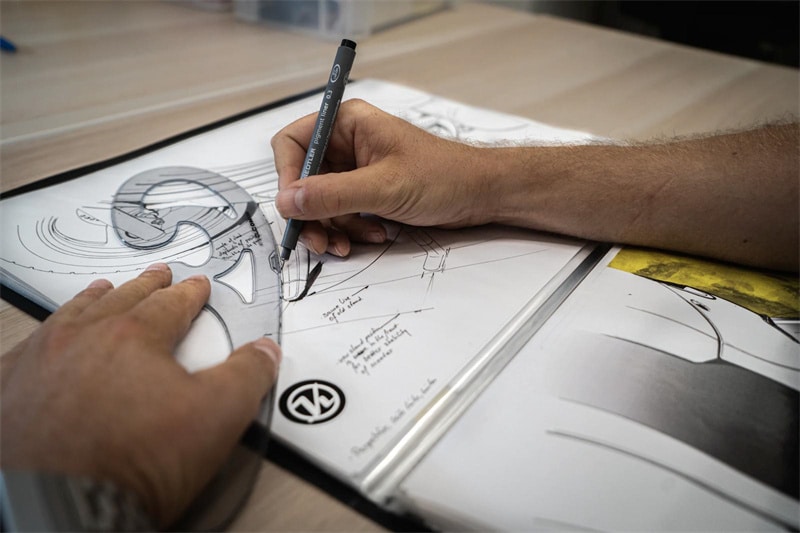
If you’re called to create something and release it into the world, you already know how emotional and all-encompassing the experience can be.
Crafting a product and putting it in the hands of the people who need it can be one of the most rewarding ways to spend your time; it can also be extremely frantic and filled with regrets and disappointments. Producing a great product takes time and consideration; the following will explore a few components of this in detail.
Start With A Need
Don’t create a product and then seek out the void that it fills; start with a real-world problem that needs a solution and craft a product to fit perfectly within the problem it solves. Far too many businesses start with a product idea instead of a problem they’re looking to solve, and it shows.
Having a core issue you’re looking to tackle also helps later on down the road when you’re making twenty decisions a day and second-guessing yourself—if you have a mission or purpose (solving a particular problem), you can always revert back to that goal when making touch choices. Select the course that best helps you solve that problem, and don’t sacrifice any element of a full solution.

Get Clear
If you can’t summarize your product in three sentences or less, you might have a complicated mess on your hands. Cut out any industry-specific jargon and craft an elevator pitch. Name your product, explain who it helps, what it helps them do, and how they benefit from that help.
If a layperson can’t understand what you mean when you present the pitch or the features of your product are tough to pin down so succinctly, you need to pare down your focus. This might involve simplifying the product or your phrasing.
Presentation Is Key
Have you ever heard the phrase people eat with their eyes first? It refers to a person’s first impression being almost entirely visual; if a meal is well arranged on a plate with pleasant garnishes, it’s more likely to be deemed tasty by the person who ate it. Likewise, your product is more likely to leave a favorable impression if it looks nice.
Don’t skip on design (pay someone if the design isn’t your area of expertise), and don’t neglect additional aspects of your product’s appearance and delivery. Think about software packaging, boxing, and labels. Make sure the entire process is visually-appealing and smooth.

Beta Test, Beta Test, Beta Test
No matter how flawless you think a product is, someone will find fault with it once it goes to market. Reduce the risk of a terrible launch or problematic product by participating in several rounds of beta testing. This involves finding people who are the target demographic for the product (people who have the problem you identified in point one) and giving them the product in exchange for feedback.
You want them to try the product out and answer all your questions regarding flaws and areas for improvement. Once you have their notes, apply them to your product and then beta test again. Take your second round of notes and apply them to the product, and then beta test again. Rinse and repeat until people’s response is glowing.
You want to avoid using friends and family for the beta testing as this can result in biased feedback. You also want to represent the full range of your potential customer base for your product. If it’s designed for all ages, you need beta testers of all ages. If it’s going to be available in urban areas and rural areas, you need both urban and rural testers.
Learn About Plastic
If your product is a physical item as opposed to a digital product, and you’re considering using plastic as part of the product, or its packaging, you need to do a bit of research. Foremost, BPA-free plastic is not safe; this simply means that one of the many toxic chemicals found in the plastic is not present—all the other toxins are still there.
Beyond this, microplastics and plastic waste are a serious threat to human health (microplastics are now being found in human blood; the average person swallows a credit card’s worth of plastic each week). Seek out alternatives. Very soon, people are going to be catching on to the utter horror that is plastic, and when they do, plastic products are going to suffer big time. Get ahead of that curve.
Don’t Settle
Finally, there are going to be pointed in this process where you encounter a big, fat no. This might be a manufacturer telling you it can’t be made cheaper or it can’t be made with non-toxic materials. It might be your own energy levels depleting that have you feeling like: well, this isn’t what I intended, but it’s good enough.
No great product was ever made via settling. Keep asking questions, keep seeking out alternative opinions, and keep looking for different people to bring on board—if you refuse to settle, you’ll end up with a stellar product.
The above information should help you take your decent product to the next level. It’s important that you don’t let time constraints keep you from making something as good as you can possibly make it—future you will be disappointed if you didn’t give it your all.










